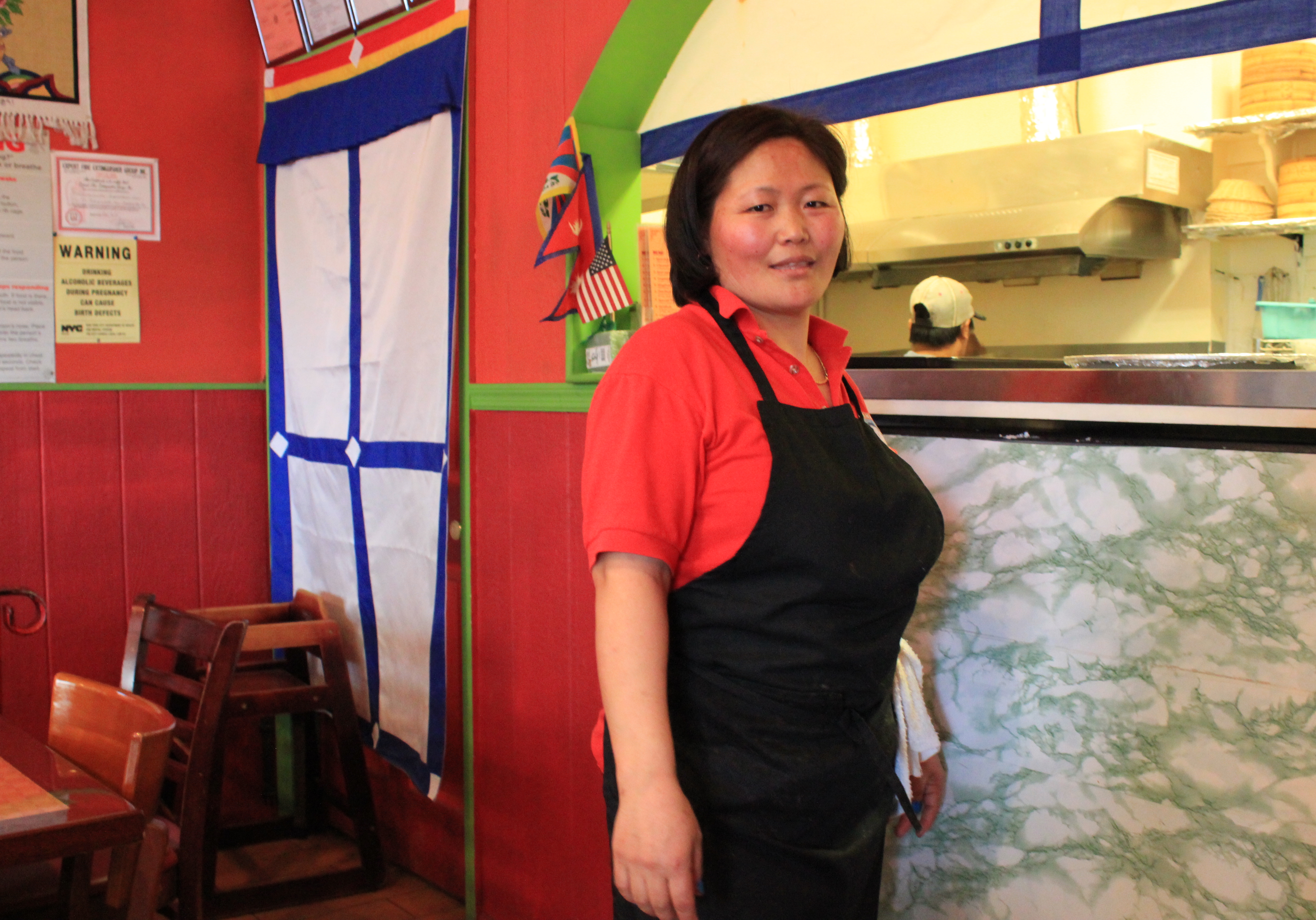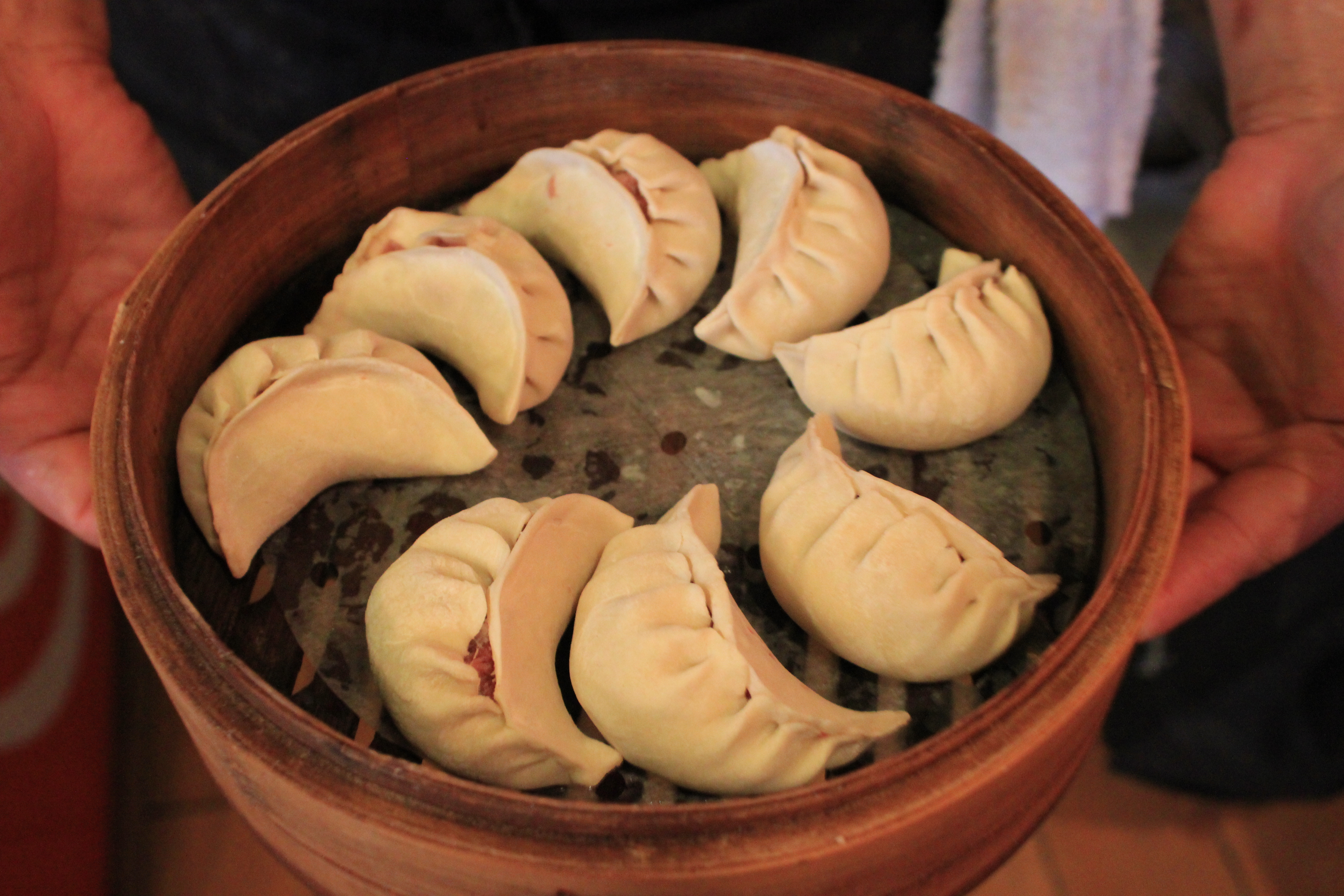Nangsang Sherpa boarded a plane from Tibet to New York City six years ago, unsure of whether or when she would return, leaving her husband and three children behind.
“I was scared and terrified thinking how am I going to make it there,” she recalled. Although her family used to catch up on Facebook, and Skype, “home was no longer home ever since she left,” said her son, Dawa Sherpa, now reunited with his mother in Queens, where she owns the one-year-old Kanchanjunga Restaurant.
Like many newcomers and immigrants, Nansang stayed with some of her relatives until she was able to settle and bring the rest of her family to New York. “The visa and green card process is very complicated,” Nangsang said.
At first she jumped from one job to another — a babysitter, caretaker, housekeeper and several other jobs she had to take to make a living.
But now the 50-year old mother of three operates a six-table restaurant at 75th street and Roosevelt Avenue in the diverse neighborhood of Jackson Heights, Queens.
Back in Tibet, Nangsang used to run a restaurant, and she feels that her business background helped her to think more independently. “I didn’t enjoy being a worker for somebody else so I decided to start my own business,” she said with a smile.
From the small kitchen, Nangsang scans the room every now and then to see if customers are enjoying their meals or need service.
Dawa, 21, moved to New York City only two years ago and works full-time with his mother at the restaurant. He enjoys helping her and does it willingly. “He comes and leaves whenever he wants,” Nangsang said.
When Dawa first moved to the US, he felt lost; he missed his friends, school and his life back in Tibet. “I got lost several times in Manhattan and it was frustrating,” he said.
He is slowly adapting to his new life in New York, “I started to learn the language and it gave me more confidence to adjust,” he said.
Still, he is enthusiastic about the culture he left behind, and eagerly offers Tibetan butter tea whenever customers walk in.
The restaurant has a window to the kitchen, so diners can watch Nangsang and her son collaborate on ethnic Tibetan dishes, below a framed picture of the 14th Dalai Lama, the spiritual leader of the Tibetan people. “He is the living God,” Nangsang said.
Nangsang comes from a village called Taplejung in Tibet, which is surrounded by three countries, Nepal in the far-eastern borders, India in the east and the Tibetan Autonomous Region of China in the north.
This unique geographic intersection is reflected in the Tibetan cuisine, as some of the dishes are traditional dishes shared with parts of India, Nepal and China. For example, vegetable noodles, curry sauce and rice are three common dishes in those cuisines, which only differ in name or recipes.
Nangsang‘s kitchen is popular with the Nepali and Tibetan communities in Queens. “I’m reminded of home whenever I come here,” said Bhuti Aangmo, 29, a Nepali regular customer who has been living in New York City for nine years with her siblings.
“The spices are the same, and some main ingredients are essentials for both cuisines,” Aangmo added, like curry spices and hot sauce for dumplings and noodles.
The menu has a selection of Tibetan and Nepalese traditional dishes, starting with momo, or Tibetan/Nepalese dumplings, Nangsang‘s personal favorite, served with vegetable soup, or stuffed with beef and with Tibetan bread. She makes the dumpling skins from scratch, as well as the noodles for soup.
Tibet’s tea culture is rich in flavor and variety. Amdo tea, a symbol of hospitality and comfort, is a daily ritual in Tibetan culture, which Nangsang serves, most of the time for free. Nangsang also offers Tibetan butter tea, made with butter, milk and salt instead of sugar.
Although Nangsang has been living in New York for more than five years, she only felt settled, she says, when her family joined her.
Nangsang speaks Tibetan, Nepalese, Hindi, English and is now learning Spanish. She managed to learn the English language in only three months.
“I was quite surprised by her English, she learned really fast!” Dawa said.
When asked what she hopes for the future of her business and her family she sighs, and with a pose she says, “It’s all in God’s hands!”



Your Comments